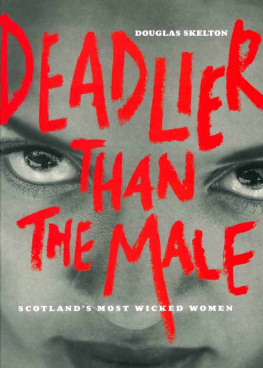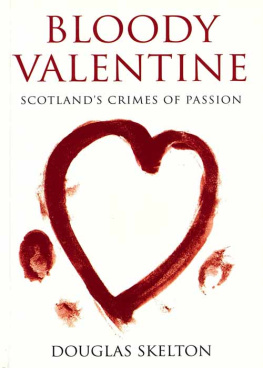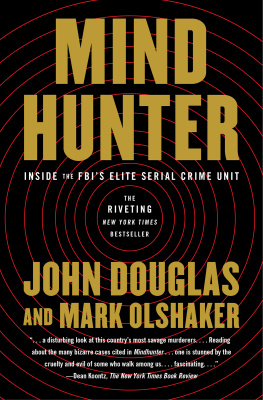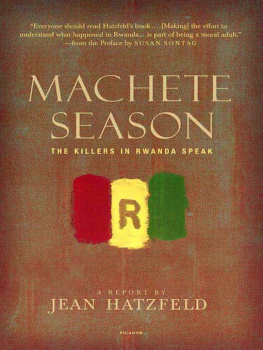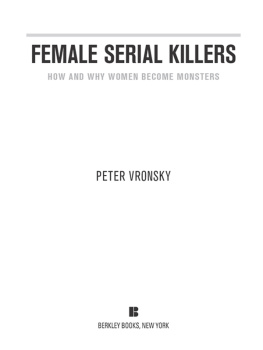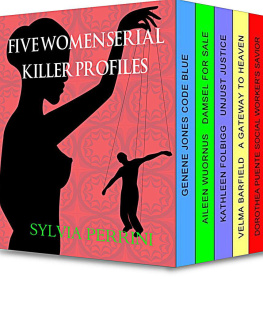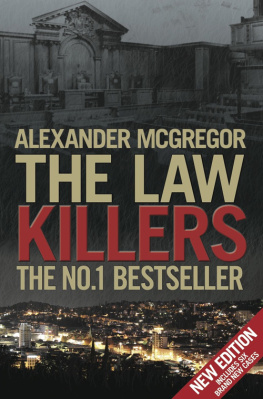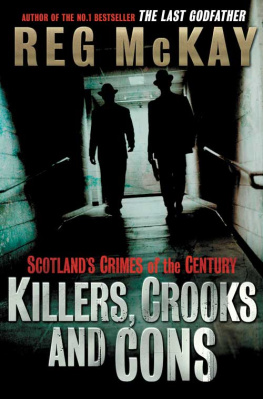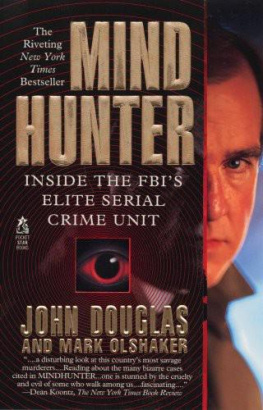Contents
Queen Joan, 1437
Mary, Queen of Scots, 15667
Lady Jean Warriston and Janet Murdo, 1600
Helen Torrence and Jean Waldie, 17512
Katharine Nairn, 1765
Helen McDougall and Maggie Laird, 1828
Catherine Stuart, 1828
Christina Gilmour, 18423
Jessie King, 18879
Susan Newell, 1923
Jeannie Donald, 1934
Let's make one thing quite clear from the beginning. Men commit the majority of murders. It is an uncomfortable notion, especially if you are a male, but true nonetheless. But, before the sisterhood gets too cocky if that's a word that can be used when dealing with women let's also make it clear that a number of those murders are committed on their behalf, at their instigation or simply to impress them. And that doesn't even begin to take into account the number of Norman Bates-alikes out there whose mothers have something to answer for.
Then there are those females who have had a little more hands-on involvement in matters murderous.
There is no doubt about it. Even though women are more often than not victims, the gentler sex does have a brutal side. Wives can murder husbands, lovers and even children. Daughters can kill parents, siblings and friends. They are capable of homicide both the premeditated type and ones committed on the spur of the moment. You will find examples of them all in these pages.
My trusty edition of the Concise Oxford Dictionary tells me that a wicked person is sinful, iniquitous, vicious and given to immorality. Although most of the women, about whom you're going to read, fit that description perfectly, wickedness is a question of perspective. Queen Joan may have had good reason to do what she did to her husband's murderers and the brutality of her revenge was in keeping with the styles of the day. However, the men who assassinated James I really believed they were doing away with a tyrant, whose wife had supported him throughout his reign. From their perspective, especially while they were undergoing hours of horrific torture, she was wicked.
The same could be said for Mary Stuart. She has cut a romantic figure through the ages but if you were to time-warp back to Edinburgh around 1567 and ask someone in the street what they thought, you would receive a different picture. It was strongly believed she had conspired with the man she would later marry to murder her husband, Lord Darnley. So, to many of her contemporaries, Mary, Queen of Scots was a wicked woman.
Jeannie Donald and Susan Newell both killed young children but the question of why they did so remains unanswered. Jean Livingston felt forced to kill her abusive husband. Christina Gilmour may have turned to poison to extricate herself from a match she had never wanted in the first place. The acts were wicked the people were not. They were confused some perhaps deranged but not evil although, understandably, the relatives of the victims saw it somewhat differently.
Other cases detailed here are more clear cut. Maggie Laird and Helen McDougall spouses of William Hare and William Burke respectively were up to their necks in the horrors of Edinburgh in the late 1820s. Jessie King knowingly slaughtered at least three babies in 1888. Katharine Nairn first lured her husband's brother into an affair and then used him to help commit murder. Catherine Stuart helped her husband to poison an uncertain number of men in order to plunder their wallets. These are all, without a shadow of a doubt, wicked women.
However, there is one famous Scottish case you will not find here, although it is mentioned once or twice, and that is the Madeleine Smith story. The case of the well-to-do Glasgow girl who very probably poisoned her French lover because his attentions were becoming inconvenient has been well documented by the likes of William Roughead, the doyen of Scottish true crime writers, and Jack House. Although you cannot go anywhere in Scottish murder lore up until the early part of the twentieth century without finding Roughead's fingerprints all over the paperwork, Jack House's account of the Smith case cannot be bettered.
So, what follows is a blood-spattered trawl through Scottish criminal history. Here is torture, stabbing, hanging, poisoning, bludgeoning, strangling, smothering and shooting. Gentle it ain't.
Happy reading.
Douglas Skelton
Queen Joan, 1437
The old woman stood before them, her head covered in a shawl, cold fingers of wind reaching out from the choppy waters of the Forth and tugging at her threadbare clothes. Normally, the king and his beautiful queen would not have given the crone a second glance but her words had stopped them before they boarded the boat to ferry them across the river to the north bank. Those words carried a warning, a dire prophecy of impending doom if they chose to spend Christmas 1436 in the Blackfriars Monastery at St Johnstoun, as Perth was known then. A claw-like hand appeared from beneath the long shawl and a gnarled finger pointed at the king, urging him to turn back, to celebrate the Yuletide elsewhere.
The woman amused James I but he ignored the warning. Such predictions were not unusual in medieval Scotland and, if he paid attention to every presentiment of death, he would never go anywhere. So he proceeded to Blackfriars Monastery as planned. Later, the speywife arrived at the gates of the monastery, as if to see how things turned out.
James should have listened to the woman for things turned out very badly not only for him but also, thanks to his English queen, for the men who plotted his death. For, after her husband's brutal assassination at the hands of a group of Scottish nobles, this unforgiving and single-minded woman supervised a bloody revenge that is unparalleled in the turbulent history of Scotland.
Joan Beaufort had caught the eye of the young James while he was languishing, albeit comfortably, in prison in England. The second son of King Robert III, James became the heir to the Scottish throne following the death of his eldest brother, David, Duke of Rothesay. It was said that David had been starved to death in Falkland Castle by his uncle, the devious and rapacious Robert, Duke of Albany. The Duke desired the return of the Governorship of Scotland which had been taken from him when Robert succeeded to the throne. Robert III, never a strong ruler, had no desire to see his surviving offspring succumb to the ambition of his ruthless brother so he resolved to send young James to the safety of France. However, an ill wind blew the bonnie boat carrying the lad who was born to be king into the path of an English ship at Flamborough Head and he was taken hostage.
He spent eighteen years in the captivity of two English rulers, Henry IV and his successor Henry V. During his time in the south, his father died, they say, from the shock and grief of hearing about his son's capture. Robert had been a good man if somewhat weak and he is best summed up by the epitaph he gave himself, Here lies the worst of kings and the most miserable of men. With the old king dead and the young monarch in the hands of the English, Albany seized the regency of Scotland. He proved a strong ruler far stronger than his father and brother had ever been but his talent for intrigue and double-dealing saw him enter uneasy alliances with Scottish nobles who believed the land and people were theirs to do with as they wished. This would prove to be their undoing in years to come.
Albany resolutely refused to pay any ransom for the young king's return and the English constantly used the boy as a threat to keep in check any plans the regent had for incursions south. Travelling in the main with the royal court across England, James was also taken to France in 1420 and again in 1421 in a bid to convince Scots fighting for the French army that they were on the wrong side.
Meanwhile, young James was growing into manhood. He was an active lad but his exposure to the English court and long periods of enforced solitude generated in him a love of poetry. He wrote his own verses, including one dedicated to a young girl he had seen from the window of his prison, either while in the Tower of London or, which is more likely, during a term at Windsor Castle. She was, he wrote,
Next page
